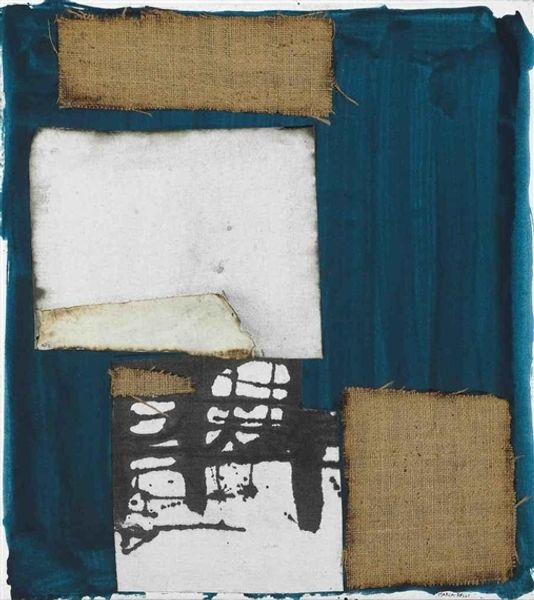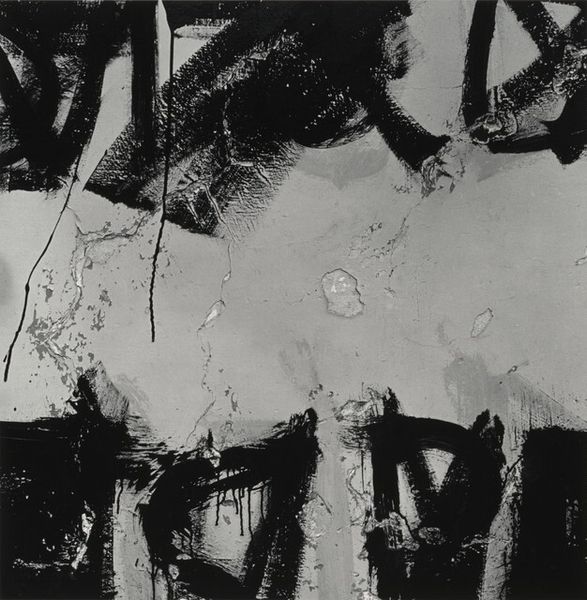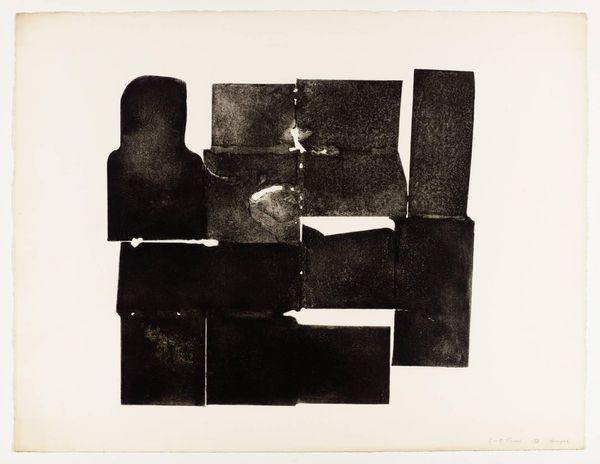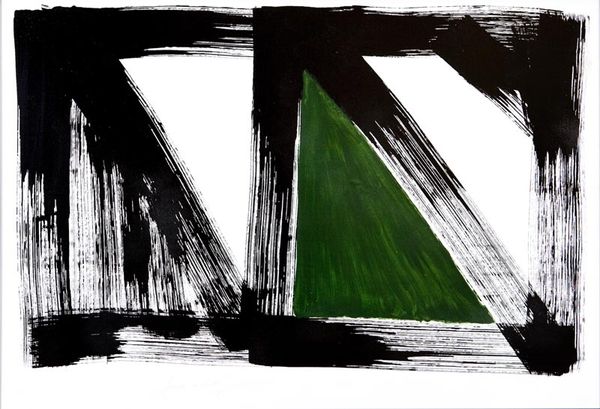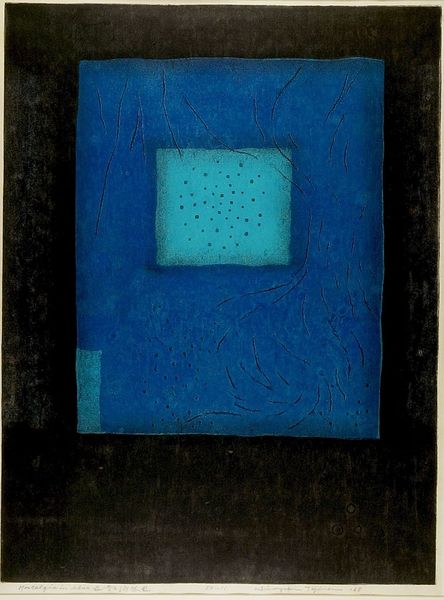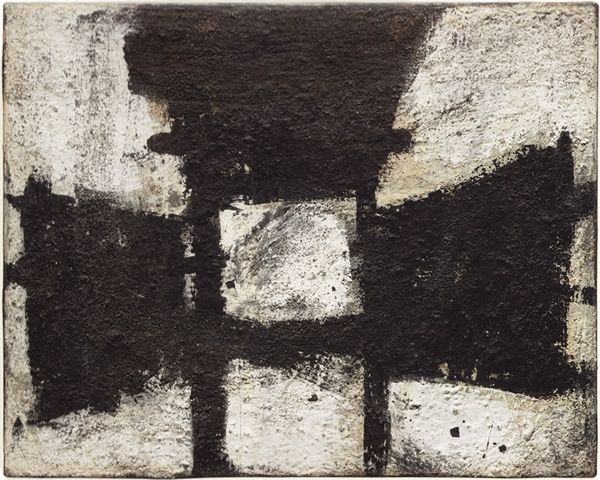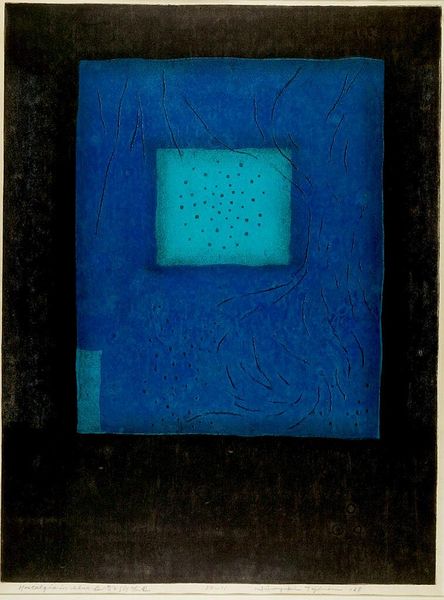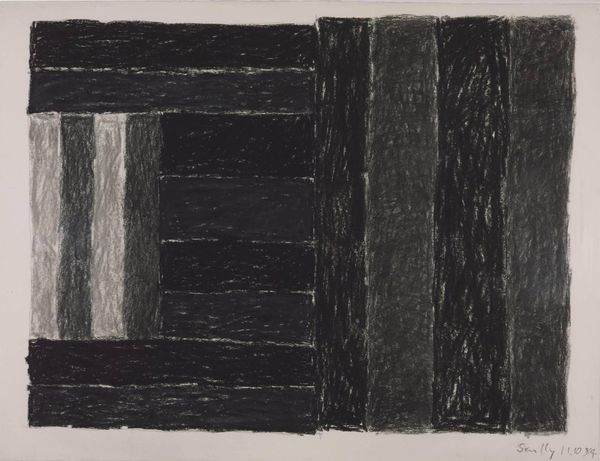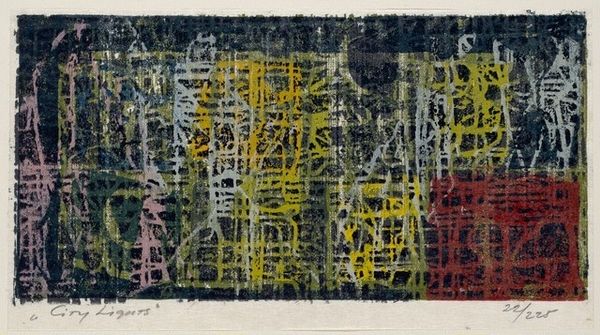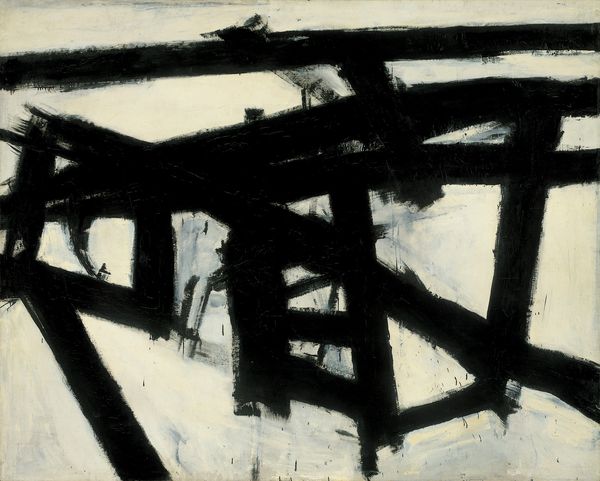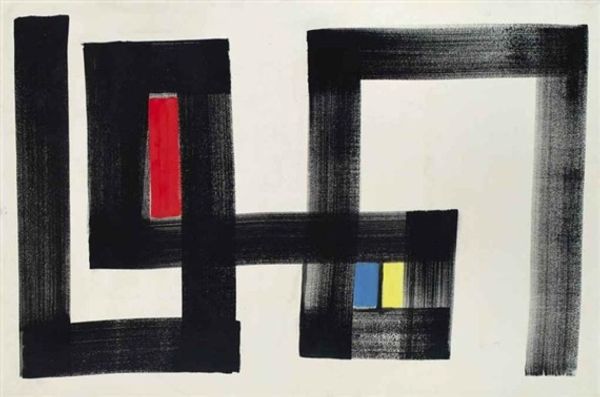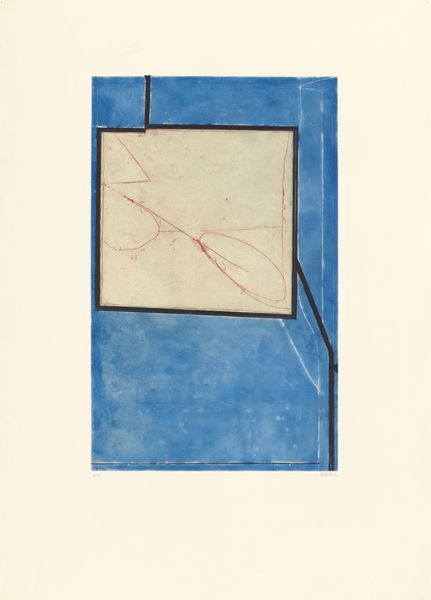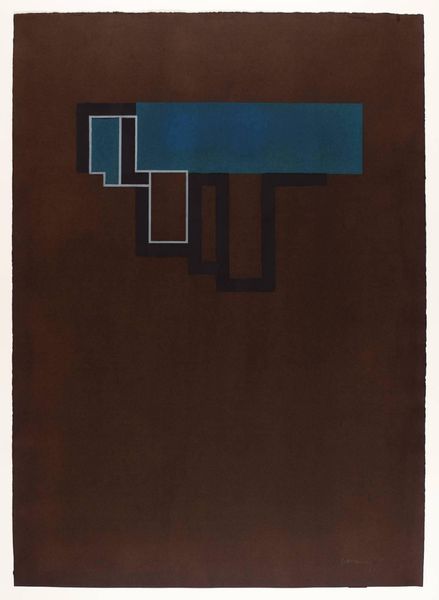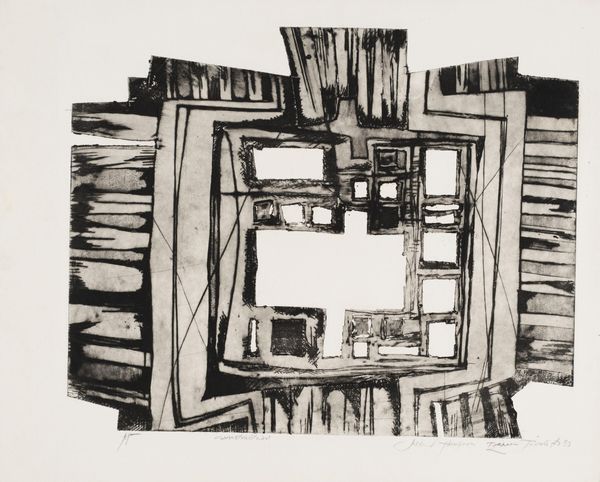
#
neo-concrete
Copyright: Amilcar de Castro,Fair Use
Curator: It strikes me as a powerful yet minimal statement; a bold declaration on canvas. What's your immediate reaction? Editor: Stark. The composition makes me think of architecture, maybe the fragmented blueprint of a building or perhaps a deconstructed window. The use of such a limited palette creates an intriguing tension. Curator: Indeed. This work, simply titled "Untitled," comes to us from Amilcar de Castro, an important Brazilian artist, dating back to 1988. Executed in acrylic on canvas, it exemplifies his approach to modernist abstraction. Looking at his practice through a contemporary lens, we can explore the socio-political dimensions present. Editor: The bold geometric shapes seem almost symbolic in their simplicity. The square and implied triangle resonate deeply. How does Castro's abstract vocabulary relate to broader cultural narratives? Curator: Castro's engagement with form moves beyond mere aesthetic concerns, operating within the context of geometric abstraction, as a deliberate response to and resistance against, the repressive political climate of Brazil during that period. Editor: I notice how the blue punctuates the otherwise monochrome work. I'm drawn to consider the significance of color here. What interpretations have scholars offered? Curator: The blue can be seen as a disruption. The geometric rigidity of the black form is broken. These intrusions could represent those who challenged dominant power structures within that specific Brazilian social climate. Editor: And how about his relationship to abstraction more generally? Do we see a deliberate break with traditional Brazilian imagery? Curator: Absolutely, de Castro's dedication to geometric abstraction breaks with earlier figurative traditions in Brazil. His work, particularly through its scale, challenged the oppressive constraints imposed on personal expression and the wider artistic communities during the country’s periods of military dictatorship. Editor: So the act of abstraction, then, becomes a potent form of expression, a form of defiance. That blue sings loudly with the power to resist! Curator: Precisely! Its very form speaks volumes against authoritarian constraint. Editor: Examining his choices in that political climate adds layers of meaning that are deeply moving. It allows the artwork to transcend mere aesthetics. Curator: And brings attention to how the socio-political landscape impacts individual experience and self-expression. Editor: Looking at this, I feel I better understand how art can hold and convey memories—of struggles, and resistance. Curator: Precisely! Its beauty is its quiet resistance.
Comments
No comments
Be the first to comment and join the conversation on the ultimate creative platform.
